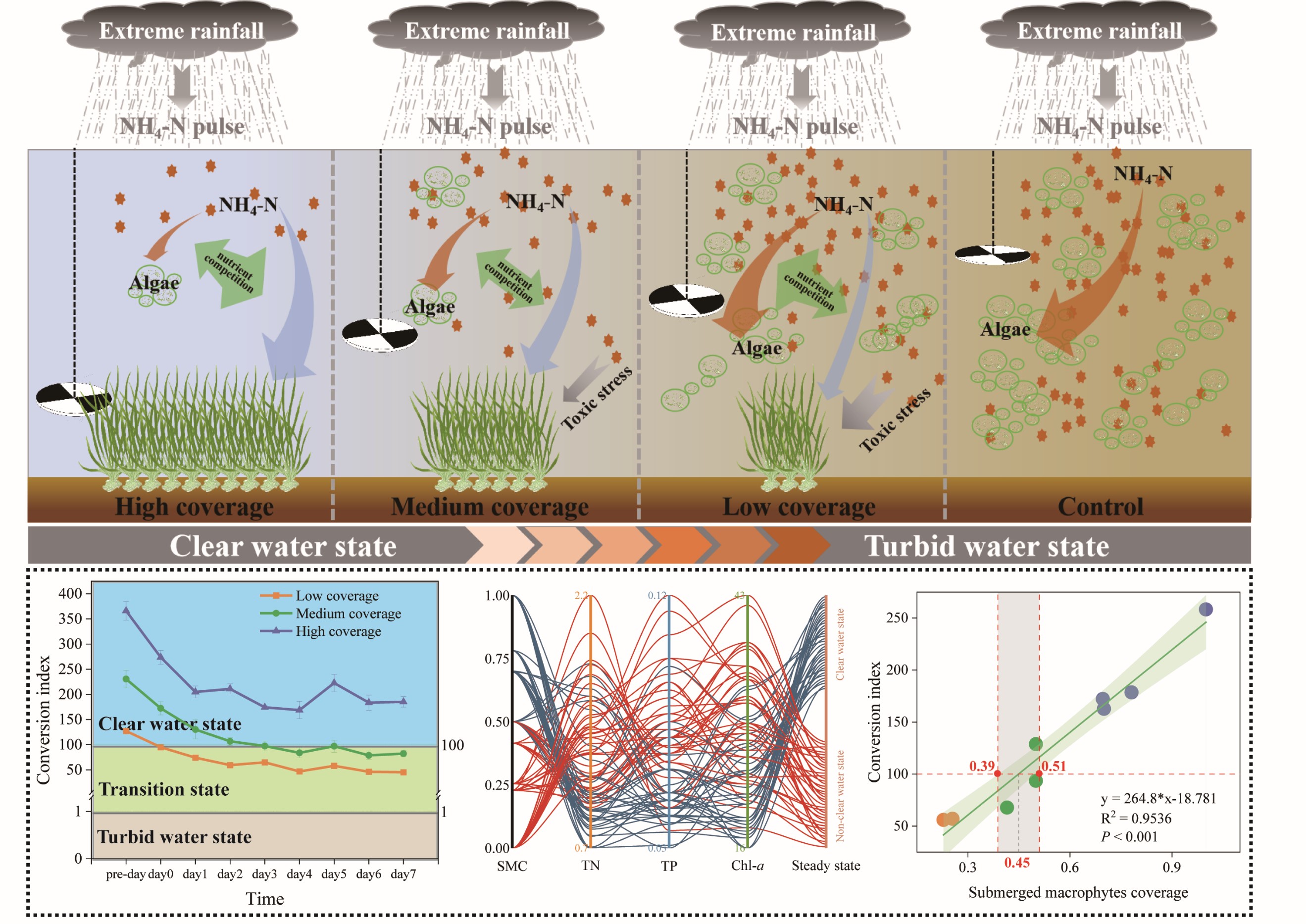
Newsroom
Study Identifies Critical Submerged-Macrophyte Coverage Threshold for Buffering NH4-N Pulse
Due to global climate change, extreme rainfall events are becoming increasingly frequent, leading to large amounts of nutrients being transported into receiving water bodies via stormwater or surface runoff. While both pulsed and chronic nutrient inputs can promote algal blooms and degrade water quality, biological and abiotic indicators tend to exhibit lower stability under pulsed input scenarios. Moreover, high concentrations of ammonium nitrogen (NH₄-N) exert toxic stress on aquatic flora and fauna, implying that pulsed NH₄-N inputs may further increase the risk of regime shifts in shallow lakes.
As key primary producers, submerged macrophytes regulate ecological balance through a series of feedback mechanisms. Therefore, identifying the minimum macrophyte coverage required to buffer such disturbances is essential for maintaining the clear-water stable state of shallow lakes.
Recently, a research group led by Prof. CAO Te from the Institute of Hydrobiology (IHB) of the Chinese Academy of Sciences, determined that—under pulsed NH4-N stress—a submerged-macrophyte coverage of 39–51% is required to preserve the clear-water regime. The findings were published in Environmental Science & Technology.
The study was conducted in the large-scale in-situ enclosure system of the Erhai Plateau Lake Ecosystem Experimental Station, Dali, Yunnan Province. By simulating an NH₄-N pulse (0.05 mg/L → 1.24 mg/L), the team examined how macrophyte coverages ranging from 0% to 100% influenced system buffering capacity and ecological resilience.
Results showed that both buffering capacity and elastic stability improved markedly with increasing plant coverage. High coverage (≥ 50%) rapidly lowered NH₄-N concentrations, suppressed its stimulatory effect on algae, and thus stabilized the clear-water state. Medium coverage (30–50%) also enhanced NH₄-N removal, but less efficiently; residual NH₄-N continued to promote algal growth. Low coverage (≤ 30%) failed to remove NH₄-N promptly, fuelling algal proliferation, while prolonged NH₄-N exposure further increased the risk of macrophyte decline.
Notably, NH₄-N stress significantly inhibited macrophyte growth, yet high coverage (≥ 50%) alleviated toxic effects by diluting the areal NH₄-N load, reducing biomass loss to near zero.
Based on these findings, the study identified the critical coverage threshold for submerged macrophytes to buffer pulsed NH₄-N inputs at 39–51%. Under a changing climate with more frequent nutrient-pulse events, maintaining macrophyte coverage at or above this range is crucial for preserving the clear-water stable state of shallow lakes.
This study is the first to quantify a macrophyte coverage threshold (39–51%) for buffering ammonium pulses, highlighting the decisive role of high-coverage submerged macrophytes in suppressing algal blooms and sustaining clear-water conditions. The findings provide direct guidance for predicting and managing regime shifts in shallow lakes under extreme climatic scenarios.

The influence of submerged macrophyte coverage on system regime shifts under ammonium nitrogen pulse (Image by IHB)
(Editor: MA Yun)